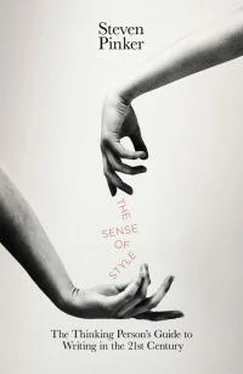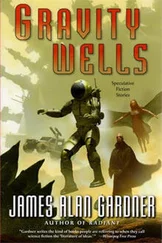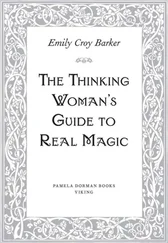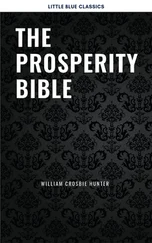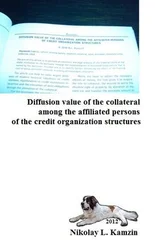Many policy analysts write as if the obvious way to deal with armies that commit human rights violations is to invade them with our vastly superior military forces. Anyone who opposes a military invasion, they argue, must be ignorant of the atrocities taking place. But that’s not why I and other statesmen favor a different strategy for ending this crisis. Make no mistake: …
Whenever one sentence comes after another, readers need to see a connection between them. So eager are readers to seek coherence that they will often supply it when none exists. One category of frequently emailed bloopers consists of sequences which are amusing not because of problems in syntax but because of problems in coherence: 1
Miss Charlene Mason sang, “I Will Not Pass This Way Again,” giving obvious pleasure to the congregation.
The sermon this morning: “Jesus Walks on the Water.” The sermon tonight will be “Searching for Jesus.”
Dog for sale: Eats anything and is fond of children.
We do not tear your clothing with machinery. We do it carefully by hand.
The patient has been depressed ever since she began seeing me in 2008.
In fact, it’s the hunger for coherence that drives the entire process of understanding language. Suppose a reader has successfully parsed a sentence and now has an understanding of who did what to whom or what is true of what. Now he must integrate it with the rest of his knowledge, because a factoid floating around in the brain unlinked to anything else is as useless as a book filed on a random shelf in a library or a Web site with no links to it. This linking must be repeated with each sentence in the text. That is how the content of a passage of text becomes integrated into the reader’s web of knowledge.
This chapter is about the sense of style in passages longer than a sentence—a paragraph, a blog post, a review, an article, an essay, or a book. Some of the principles of style that apply within a sentence, such as building an orderly tree and placing given before new information, apply to extended passages as well. But as we shall see, coherent discourse also uses devices that differ from the branching of a tree, and our metaphors must expand accordingly.
At first glance, the organization of a text really does seem like a tree, with passages of language embedded in still larger passages of language. Several clauses are joined or embedded in a sentence; several sentences make up a paragraph; several paragraphs make up a section, several sections a chapter, several chapters a book. A text with this hierarchical structure is easy for a reader to assimilate because at any level of granularity, from clauses to chapters, the passage can be represented in the reader’s mind as a single chunk, and the reader never has to juggle more than a few chunks at a time as he figures out how they are related.
To compose a passage with this orderly structure, a writer must organize the content she hopes to convey into a neat hierarchy. Sometimes she may be lucky enough to begin with a firm grasp of the hierarchical organization of her material, but more often she will have an unruly swarm of ideas buzzing in her head and must get them to settle down into an orderly configuration. The time-honored solution is to create an outline, which is just a tree lying on its side, its branches marked by indentations, dashes, bullets, or Roman and Arabic numerals, rather than by forking line segments. One way to fashion an outline is to jot your ideas on a page or on index cards more or less at random and then look for ones that seem to belong together. If you reorder the items with the clusters of related ideas placed near one another, then arrange the clusters that seem to belong together in larger clusters, group those into still larger clusters, and so on, you’ll end up with a treelike outline.
But now you face a major difference between the syntactic tree of a sentence and the outline tree of a text. When it comes to putting the units into a left-to-right order, the rules of English syntax leave writers with only a few possibilities. The object, for example, pretty much has to come after the verb. But if you’re writing an essay on mammals, it’s up to you whether to write first about the rodents, then the primates, then the bats, and so on, or first the primates, then the felines, then the whales and dolphins, or any of the other 403,291,461,126,605,635,584,000,000 logically possible orderings of the twenty-six subgroups. The writer’s challenge is to come up with a scheme to order these units of text—to turn a dangly mobile into a rigid tree.
Often an author will pick an order more or less arbitrarily and use verbal signposts or numbered headings to guide the reader on his journey through the text ( Part II Section C Subsection 4 Paragraph b, or Section 2.3.4.2 ). But in many genres, numbered headings are not an option, and as we saw in chapter 2, excessive signposting can bore and confuse a reader. And regardless of how many headings or signposts you use, it’s always best to lay an intuitive trail through the territory: a scheme for stringing the units into a natural order that allows readers to anticipate what they will encounter next. There is no algorithm for doing this, but let me give you a couple of examples.
I once had the challenge of explaining an unruly literature on the neurobiology and genetics of language, which embraces a vast range of topics, including case studies of neurological patients, computer simulations of neural networks, and neuroimaging of the brain areas that are active during language processing. The first temptation was to order the studies historically, which is how textbooks do it, but this would have been an indulgence in professional narcissism: my readers were interested in the brain, not in the history of the doctors and professors who study the brain. It dawned on me that a clearer trajectory through this morass would consist of zooming in from a bird’s-eye view to increasingly microscopic components. From the highest vantage point you can make out only the brain’s two big hemispheres, so I began with studies of split-brain patients and other discoveries that locate language in the left hemisphere. Zooming in on that hemisphere, one can see a big cleft dividing the temporal lobe from the rest of the brain, and the territory on the banks of that cleft repeatedly turns up as crucial for language in clinical studies of stroke patients and brain scans of intact subjects. Moving in closer, one can distinguish various regions—Broca’s area, Wernicke’s area, and so on—and the discussion can turn to the more specific language skills, such as recognizing words and parsing them into a tree, that have been tied to each area. Now we can switch from the naked eye to a microscope and peer into models of neural networks. From there we can crank the microscope one more turn to the level of genes, which is an opportunity to review studies of dyslexia and other inherited language disorders. All the research fell into place along a single global-to-local continuum. I had my ordering.
The ways to order material are as plentiful as the ways to tell a story. On another occasion I had to review research on English, French, Hebrew, German, Chinese, Dutch, Hungarian, and Arapesh, a language spoken in New Guinea. English was the natural starting point, but in what order should I bring up the others? I suppose I could have reviewed them in terms of how familiar they are to me or to American readers, or the order in which the studies were done, or even alphabetically. But instead I marched backwards in time to older and older (and more and more inclusive) language families: first the languages begotten by Germanic tribes who lived about 2,000 years ago, including Dutch and German; then to other Indo-European tribes, such as the Italic people who split from their Germanic brethren about 3,500 years ago, which brings in French; then to the Uralic tribes, which probably coexisted with the Indo-Europeans about 7,000 years ago and left us with Hungarian; and so on, back through history and outward in language families.
Читать дальше
